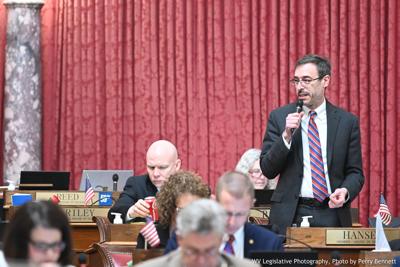From the Article by David Beard, Morgantown Dominion Post (Yahoo! News), March 15, 2023
MORGANTOWN — West Virginia will receive more than $18 million in federal funds to address the presence of potentially toxic PFAS chemicals in drinking water.
State Health Officer Matthew Christiansen shared that news during Gov. Jim Justice’s Wednesday administration update press briefing. Justice was reviewing legislation completed during the recent session, and HB 3189 — the PFAS bill — is awaiting his signature.
Christiansen reminded listeners that the U.S. EPA recently set maximum contaminant levels for two members of the PFAS family — PFOA and PFOS — at 4 parts per trillion. EPA also recommended calculations for four other PFAS compounds.
Expecting that to happen, the Department of Health and Human Resources and the Department of Environmental Protection formed a working group to help local water systems develop plans to treat drinking water for PFAS. Christiansen’s bureau is part of DHHR and he said, “The Bureau for Public Health is committed to ensuring safe water for the citizens of West Virginia.”
The EPA announced that the $18 million will come to the state, Christiansen said. The money can be used for a wide variety of actions, including research, testing treatment, source water control, restructuring, consolidation and technical assistance.
The working group will offer support and avenues for communication, and help local systems with best practices and mitigation, he said.
HB 3189 is the PFAS Protection Act, targeting PFAS in drinking water. It follows on the heels of a Department of Environmental Protection Study ordered in 2020, performed by the U.S. Geological Survey.
Under prior EPA drinking water advisory numbers, 37 of the state’s 279 raw water intakes had PFAS levels above those set by EPA. Under the new thresholds, 100 more sites exceeded the level, for a total of 137.
Now, DEP will go back, resample the finished (treated) water from those sites and try to determine the sources. Industries that use PFAS chemicals must report their usage to the DEP. And DEP will, to the extent data is available, consider ways to address the sources and mitigate the impacts on public water systems.

